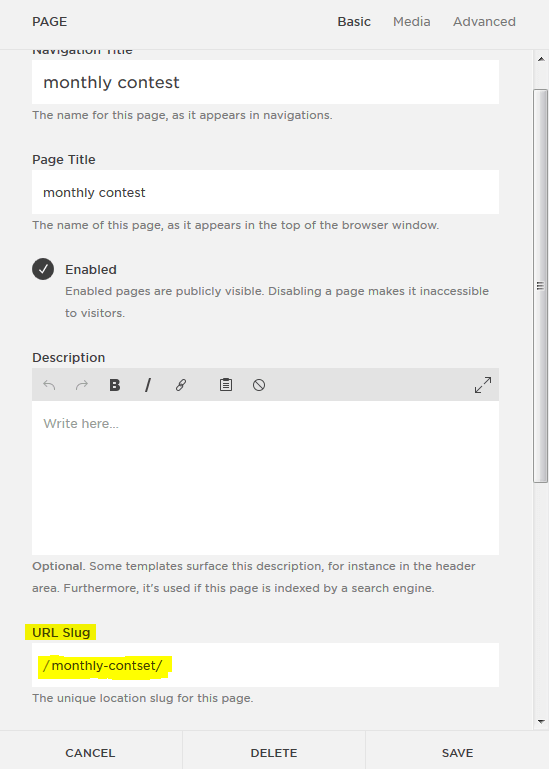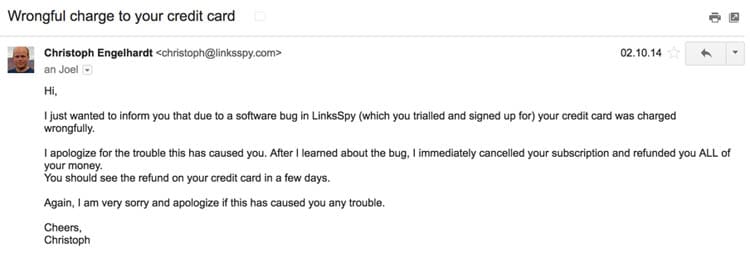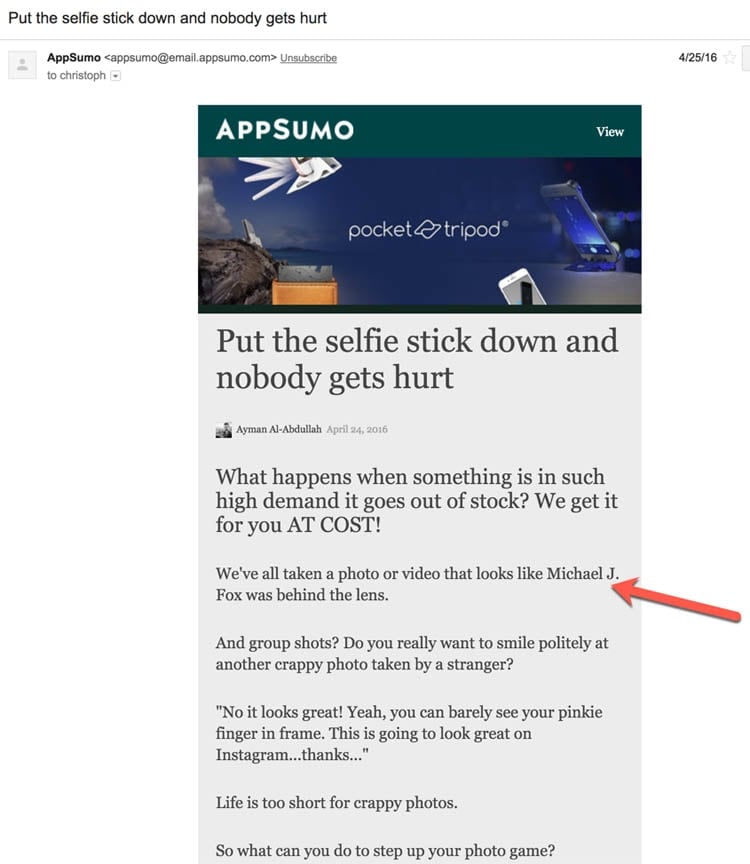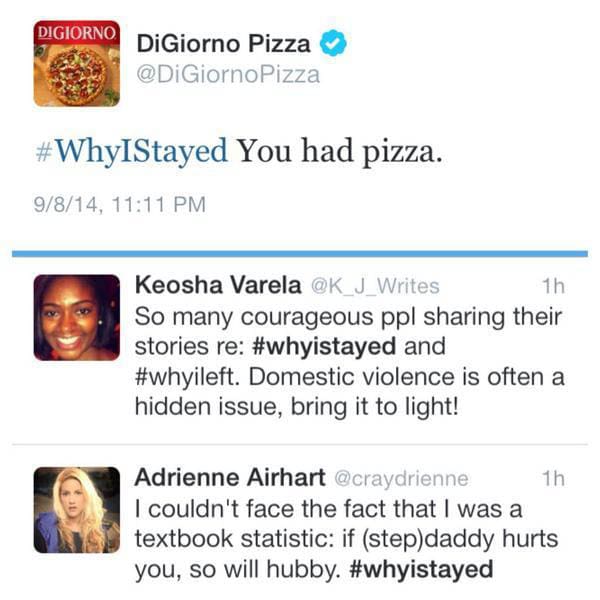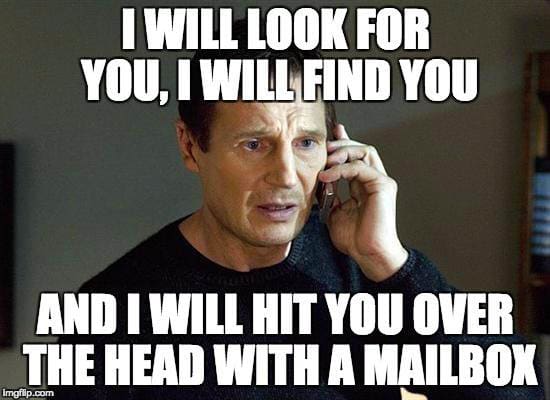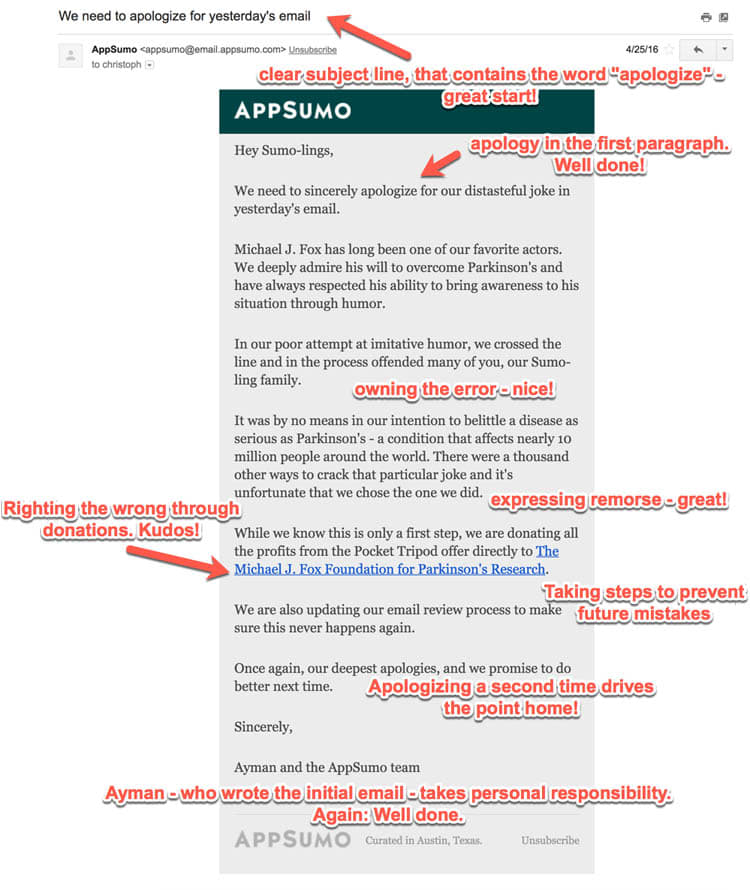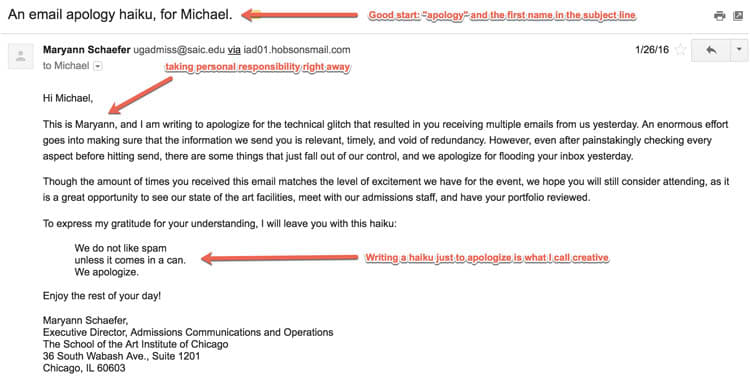Too Many Requests from Your Network
Please complete verification to access this content.
Imagine the following: Your life is great. You announced a new sale to your mailing list just now, anticipating a nice little bump in sales.
But within minutes your phone starts buzzing with incoming emails: People are writing you back in anger because you messed up the sales link!
They are seriously pissed.
And you are scrambling to correct your mistake as fast as possible, already dreading the prospect of writing another email to apologize.
Look: No one loves writing apology emails.
But someone has to – and done right, they can dramatically lower the negative impact of your marketing snafu.
So let’s get this show on the road and talk about the dos and don’ts when it comes to apology emails.
When NOT to send an apology email
First, before we discuss when and how to send an apology via email, let us first talk about when you’re NOT required/supposed to write one.
For starters, you shouldn’t send an apology email each time you hide a tyypo in your emails or yo grammer ain’t up to snuff.
Seriously, those mistakes can and do happen.
Take it in stride and make sure to proofread your emails the next time.
When you accidentally send the same email twice
Secondly, if you, by accident, send the same email twice, I wouldn’t necessarily send another apology email right away.
Rather, include the apology at the start of the next regular email.
However, if you flood your reader’s inboxes, that’s a totally different topic.
For example, The School of the Art Institute of Chicago had a hiccup at their ESP resulting in 131,000 contacts getting the same email between 11 and 16 times within a 30-minute time frame.
Such an accident clearly warrants an apology – don’t you think so?
When you accidentally send the wrong coupon or promo code
If you made the mistake of sending a misspelled coupon code, don’t stress.
Add the misspelled variant with the same discount/offer into your backend.
This will enable you to continue to capture those sales.
When you include a broken link
Next, if you include a broken link and are able to fix it within minutes of sending the email, you likely don’t need to apologize to your whole list with another email.
Instead, you can either apologize in the next email or send an apology email right away – but only to the part of your mailing list that opened and clicked the broken link.
How to fix a broken link in an email
You’re probably wondering how you are going to fix a broken link in an email that is already out the door.
It’s quite easy, when you think about it.
Chances are that the link is pointing to the wrong URL on your own website.
Say you wanted to link to https://www.saasemailmarketing.net/monthly-contest/,
but you have a typo and instead it’s https://www.saasemailmarketing.net/monthly-contset/ in your email.
Bummer 🙁
The way you fix this is to add a redirect from /monthly-contset/ to /monthly-contest/.
How you do this depends on your webserver, but here’s a page on Wikipedia about server-side redirect.
My friend Justin Mason is running an ecommerce site for custom bottled water and he told me about a use case:
For those if you without access to your server (ie. Shopify/SquareSpace/Wix/Hosted WordPress etc.), there is another option. Clone your target page and set a custom url (or url slug as its sometimes called) with the “broken url” ie. /monthly-conset/. This second page would enable you to rapidly capture what would otherwise amount to lost sales, conversions, and unhappy customers.
Example:
If you’re staging the whole thing to increase your numbers
Now this is something that I’ll never quite understand, but some people make “mistakes” purposefully in their emails – just so they can send an apology email.
The logic behind this is that a sales/marketing email doesn’t get much attention from readers – but an apology email does.
So they deliver their real pitch in the apology email to increase their conversion rate.
If you’re doing this, stop now!
Is the short-term increase in sales really worth the long-term damage to your brand? Didn’t think so.
When to send an apology email
With the bad ideas out of the way, let’s focus on when it’s wise to send an apology email.
When you can’t fix the broken link (in time)
Re-imagine the scenario of you sending an email with a broken link. Now imagine you’re hitting “Send” and then you head out to grab lunch with your colleagues on the other side of town – because where else do they make such a fantastic seafood risotto?
So two hours and a tall Double Chocolaty Chip Creme Frappucino later, you sit back down at your computer to an inbox of 2,837 unread emails.
This time, there’s no way around sending an apology email.
If you accidentally charged customers
Let me tell you about the worst snafu I had with my own SaaS app – LinksSpy.com – (so far):
Basically, I had messed up the cancellation code and users were cancelling without their subscription being deleted.
Took me a while to realize what had happened, too.
As it turned out, I had charged 4-5 customers for up to two months after they had canceled. Oopsie…
You bet I did write each and every one an email.
Here’s one of them:
When you said something rude and/or offensive
Another good reason to send an apology email is when you went full Trump on your mailing list.
Something like what happened to AppSumo a while ago:
I’m not going to point fingers at anyone here. Sure, making jokes about people’s diseases is offensive.
But personally, I think that kind of misjudgment just happens sometimes.
Sometimes, when you try to be funny, you overstep boundaries.
As long as you apologize – and believe me, AppSumo aced their apology email – everything’s okay (at least in my book).
We will analyze their apology email in a moment.
How to write this apology email
Let’s get to the meat and potatoes: How does one write a good “Oopsie” email?
Calm down
First order of business: Keep calm and apologize. Sure, you effed up.
But chances are that you didn’t eff up royally.
Or at least not as bad as those guys who used a hashtag against domestic abuse to promote pizza:
BTW, here are some more social media screwups by big brands to make you feel better.
Be personal
I guess it’s obvious, but I’d rather spell it out just in case:
You can NOT send an apology email from an unattended mailbox – ever.
Don’t you dare send an apology email from “no-reply@”.
If you do, well, I’ll let Liam Neeson take it from here:
Think about it: How would you feel if the apology came from a no-reply email address?
So what can you do better? Ideally, send the email from a personal inbox.
At the very least, send it from your team inbox, but sign it with a real person.
Apologize (d’oh!)
Listen: When you write the email, cut back on those commercials.
Forget about “leveraging” “minor setbacks” to improve “customer satisfaction.”
Tell your readers that you goofed up.
Apologize, like, you know… use the damn word: “We apologize for…”
A more light-hearted “Oopsie” is also fine, if it’s consistent with your brand and it was just a minor mistake.
Provide updated information
Beyond apologizing, provide updated information if applicable.
So if you sent the wrong link or discount code, send the correct link/code along.
If you mentioned a wrong date or location for an event, provide the correct one now.
Be empathetic
Basically, don’t go all Trump (I swear that guy is a gold mine for anecdotes) and tell the pregnant widow of a fallen soldier that he “knew what he was signing up for.”
Use some empathy: What words would you expect to hear if you were in your reader’s position?
If you hurt someone with your words or actions, consider a way you can go beyond just saying sorry. Maybe you can donate to a worthy cause?
Explain the steps you’re taking to prevent future mistakes
Lastly, make sure to let your readers know about the steps you are taking to ensure the same (and similar) mistakes won’t happen again.
In many cases, email readers are scanning the message.
A few bold words or bullet-list points can help drive eyes towards the most important part of the message.
I’ve dedicated a separate section to things you can do to prevent future mistakes, so y’all have to be patient a little more. 😉
I’m in a hurry. Give me some good apology emails I can copy!
Okay, I get it: You’ve just goofed up and need some fresh help – pronto!
Here are some inspirations:
Dissecting AppSumo’s apology email
First, Let’s look at how AppSumo styled their apology email:
As you can see from my comments on that picture, this apology email is stunningly written.
I mean, look at that: They apologize twice, they don’t try to play it down, they take responsibility, they try to right their wrongdoing, etc.
This email has everything.
Apologizing after you DoS’d your reader’s inboxes
Earlier, I was telling you about that one time when the School of the Art Institute of Chicago bombarded their subscriber’s inboxes with 11-16 emails in 30 minutes.
Want to read their apology? Of course you do!
Here it goes:
Again, I think that was a pretty solid apology email. Or when was the last time someone wrote a haiku for you to apologize? Never? Sounds about right.
Even more good examples
Here’s a great compilation of 6 cleverly written emails that you can use to craft your own apology email.
Avoiding apology emails in the future
Here’s the thing: Writing apology emails isn’t all too complicated.
You just have to actually mean it, follow the steps laid out above, and take liberal inspiration from the examples provided here.
But the important part is how you handle things after you hit “Send” on that apology email.
How do you prevent it from happening again in a month?
How do you prevent someone else on the team from making the same mistake?
Do a post-mortem analysis to find the root cause
First, you need to find the reason why your marketing went off the rails – you need to find the root cause.
A fantastic way to find the root cause is a method termed the “5 Whys.” Here’s a video explaining the process:
Okay, just kidding.
But it’s a great video, nonetheless.
Well, here’s an article explaining the process.
Here’s an example to find the root cause for an apology email.
Why did we send out an apology email?
Because Chris put a broken link in the winter sale email.
Why did Chris put a broken link in the email?
Because Chris is an idiot. Because Chris added a link with a merge field in the URL, made a small typo in the merge field, and no one reviewed the email before it went out.
Why was there no review for outgoing marketing emails?
Because it’s a one-person shop and there simply isn’t a co-worker to review things.
Chris also didn’t use any software to catch errors as there was no formal review process or checklist.
See, it doesn’t always have to be exactly 5 whys. If you find the root cause after 3 whys, that’s okay. If you need to ask 7 whys, that’s good, too.
Have a formal review process or a checklist
Now, with the root cause established, it’s easy for Chris to write a checklist outlining the review process.
It doesn’t have to be fancy. Something like this will suffice as a starting point:
- Use a tool like Grammarly or Hemingway to correct typos and grammar mistakes or improve readability
- Send a test email to your Send Check It address and fix any reported bugs
- Send yourself a test email
- Click every link in the test email
- Double-check the subscriber segment
- Check the plain text view for errors
- Are all images working?
A few words on the tools mentioned here:
For starters, Grammarly helps you fix your grammar and spelling with a super cool user interface.
Secondly, Hemingway rates the readability of your text and tells you which sentences to split up, which adverbs to avoid, etc.
I usually aim for a readability score of between 7 and 10. (This text has a 7 – check!)
Lastly, Send Check It gives you a custom email address where you can test send your marketing emails.
It then checks your emails for messed-up merge tags (e.g. |F_NAME| instead of |FNAME|) or broken links.
They also have an email subject line checker for your marketing emails.
You can add more points to this list – e.g. “Has one clear call-to-action?” or “Test on mobile devices” – but this is okay for now.
Conclusion
Writing a solid apology email isn’t that hard and with this handy guide, you’ll get it done in 30 minutes or less.
Christoph is the author of the SaaS Email Marketing Handbook and the founder of LinksSpy.com. In his spare time, he loves hiking and astro phototography

